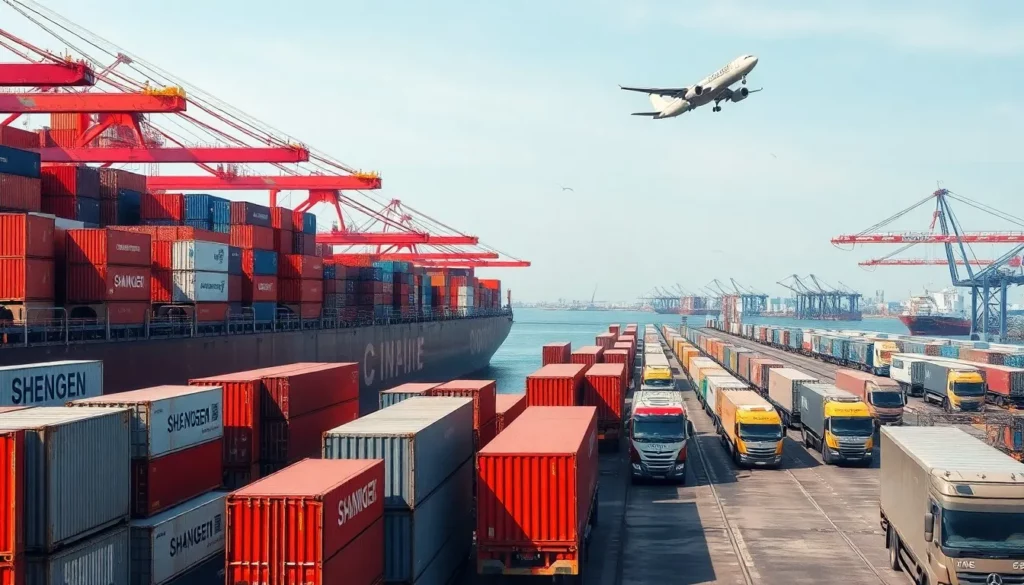When importing from China to Vietnam, you have multiple shipping methods to choose from, each suited to different business needs. Selecting the right option depends on your priorities—cost, speed, or flexibility. Here’s a clear comparison to guide your decision.
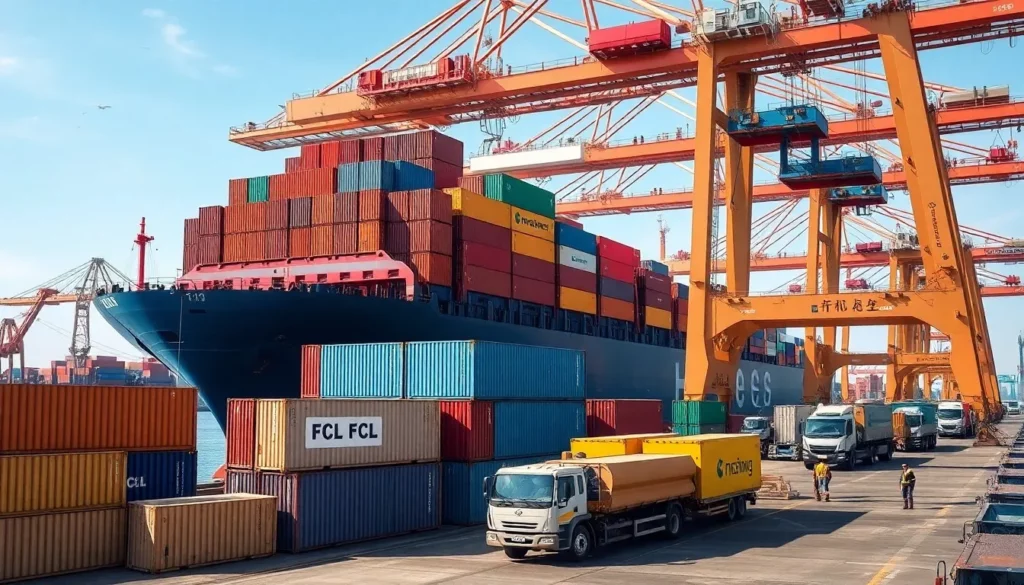
Sea Freight: Ideal for High-Volume Shipments
Sea freight is the go-to choice for businesses shipping large quantities from China to Vietnam. It’s cost-effective and reliable for non-urgent deliveries, making it a cornerstone of global trade.
Full Container Load (FCL): Exclusive Container Use
With FCL, you reserve an entire container for your goods, ensuring greater security and minimizing handling risks. This method suits shipments nearing or exceeding 15 cubic meters.
Why Choose FCL? Benefits for Large Businesses
If you’re a retailer or manufacturer moving substantial volumes, FCL offers the best per-cubic-meter value.
For example, as of June 2025, shipping a 20-foot container from Shenzhen to Haiphong costs roughly $150, while a 40-foot container runs about $200.
Tip: Always compare quotes from multiple forwarders to lock in the best rate.
Less Than Container Load (LCL): Shared Space for Smaller Loads
LCL lets you share container space with other importers, offering flexibility for smaller shipments. It’s a practical solution when your cargo volume is below 15 cubic meters.
Why Choose LCL? Cost-Effective for SMEs and E-commerce
For small to medium enterprises (SMEs) or e-commerce businesses, LCL keeps costs low without requiring a full container. Current rates from Shenzhen to Ho Chi Minh City average $10 per cubic meter.
Best practice: Ensure your goods are well-packaged to avoid damage in shared containers.
Major Ports in China and Vietnam
Vietnam’s key seaports include:
- Hai Phong Port: Northern hub for industrial goods.
- Da Nang Port: Central Vietnam’s growing logistics center.
- Cat Lai Port (Ho Chi Minh City): Handles over 5 million TEUs annually.
China’s primary export ports are:
- Shanghai: The world’s largest port by volume.
- Shenzhen, Ningbo, Hong Kong, Guangzhou: Major gateways for Vietnam-bound cargo.
These ports process billions of tons of cargo yearly, ensuring efficient connections.
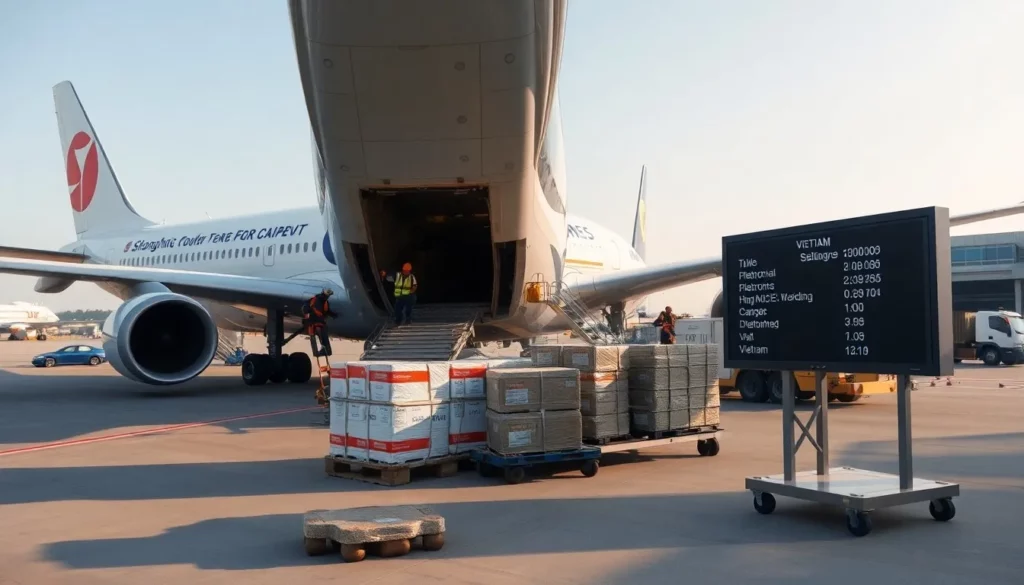
Air Freight: Speed for High-Value Goods
Air freight is your fastest option, delivering goods from China to Vietnam in 1-3 days. It’s perfect for high-value or time-sensitive shipments, though it comes at a premium.
Standard vs. Express Air Cargo
Standard air cargo balances cost and speed, while express services prioritize urgent deliveries, sometimes in just 8-10 hours.
Tip: Use express for critical shipments like product samples needed for trade shows.
When to Use Air Freight? E-commerce and Electronics
Choose air freight for high-value electronics, fashion items, or e-commerce orders where speed outweighs cost. For instance, during peak seasons, air freight ensures you meet tight deadlines.
Key takeaway: Calculate the cost-benefit of faster delivery against higher rates.
Major Air Hubs
China’s top export airports include:
- Shanghai Pudong
- Guangzhou Baiyun
- Shenzhen Bao’an
- Hong Kong International
Vietnam’s key air cargo hubs are:
- Noi Bai International (Hanoi)
- Tan Son Nhat International (Ho Chi Minh City), supported by facilities like Saigon Cargo Service Corporation (SCSC).
Cost vs. Speed: Is Air Freight Worth It?
Air freight rates from Hong Kong to Hanoi range from $1.73 to $3.23 per kilogram as of June 2025, depending on carrier and service. While pricier than sea freight, the speed can justify the cost for urgent goods.
Important warning: Always factor in volumetric weight, as it may increase costs for bulky items.
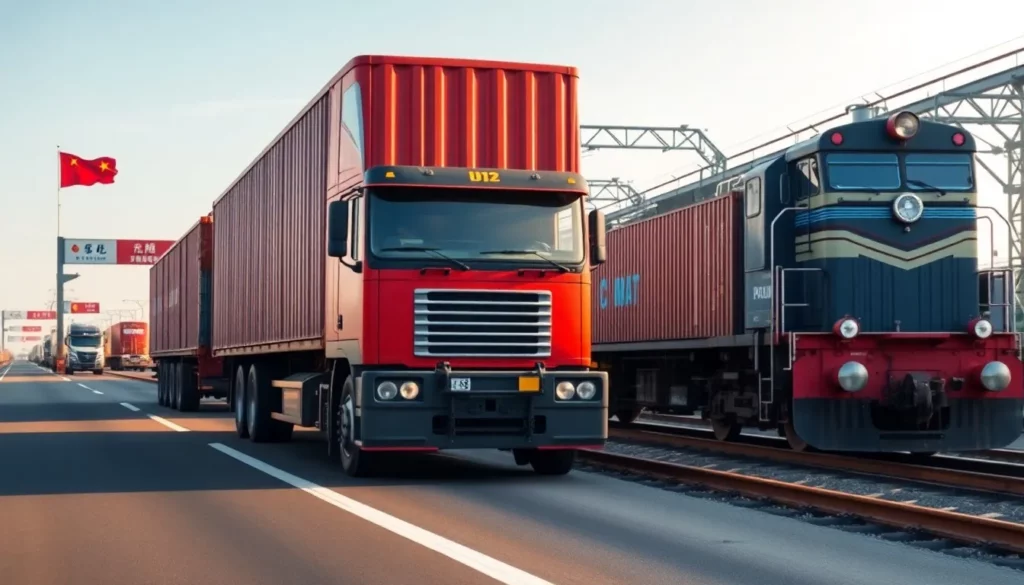
Road & Rail Freight: Overland Efficiency
Overland options like road and rail freight provide a cost-effective middle ground, leveraging the shared border between China and Vietnam.
Cross-Border Trucking: Flexible Routes
Road transport takes 4-7 days via border crossings like Pingxiang or Youyiguan Port. It’s ideal for goods too large for air but not requiring sea freight’s volume.
Why Choose Road Freight? Just-in-Time Delivery
Road freight suits just-in-time supply chains, enabling frequent, smaller shipments. For example, goods from Guangzhou to Hanoi can arrive in 3-5 days.
Best practice: Coordinate with your forwarder to ensure smooth border transitions.
Rail Freight: Growing Network
Rail freight has surged, with a 1,153% year-on-year increase in 2024, per China Railway Nanning Bureau Group. It now moves 262 product categories, from electronics to agricultural goods.
When to Use Rail? Heavy and Bulk Goods
Rail is perfect for heavy machinery, construction materials, or bulk commodities. The Nanning International Railway Port handles 68% of heavy-duty vehicles and 84% of containerized goods to Vietnam.
Key takeaway: Rail offers a reliable, mid-cost option for oversized cargo.

Express Shipping: Fastest for Small Parcels
Express shipping delivers small parcels, samples, or documents door-to-door with unmatched speed and tracking.
How Express Services Operate
Couriers like DHL, FedEx, UPS, and TNT manage everything—pickup, customs, and delivery—with real-time tracking.
Tip: Use express for urgent contracts needing same-day delivery.
When to Use Express? Samples and Small Orders
Express is ideal for product samples, urgent documents, or small e-commerce orders where customers demand rapid delivery. Despite higher costs, the convenience can be critical.
Important warning: Confirm weight and dimensions upfront to avoid surprise fees.
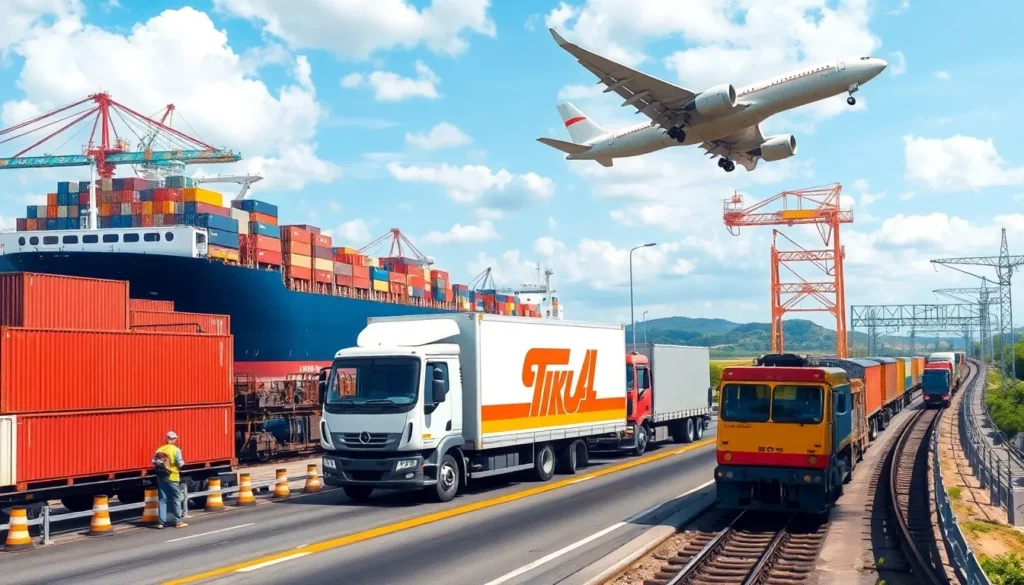
Transit Times: Planning Your Shipments
Accurate transit time estimates are vital for meeting customer expectations and managing your supply chain. Here’s what to expect across methods.
Port-to-Port and Door-to-Door Times
| Shipping Method | Port-to-Port | Door-to-Door |
|---|---|---|
| Sea Freight | 4-5 days | 7-10 days |
| Air Freight | 1-3 days | 1-3 days |
| Express Courier | 8-10 hours | 1-2 days |
| Road Freight | N/A | 4-7 days |
| Rail Freight | N/A | 5-10 days |
Best practice: Build buffer time into your schedule for unexpected delays.
Factors Affecting Transit Times
Several variables can extend transit times:
- Port Congestion: Adds 1-3 days during peak seasons.
- Customs Clearance: Vietnam aims to process declarations in 4 hours, but errors can delay this.
- Weather: Typhoon season disrupts all transport modes.
- Inland Transport: Adds days for remote origins or destinations.
Important warning: Monitor weather forecasts during monsoon season to anticipate delays.
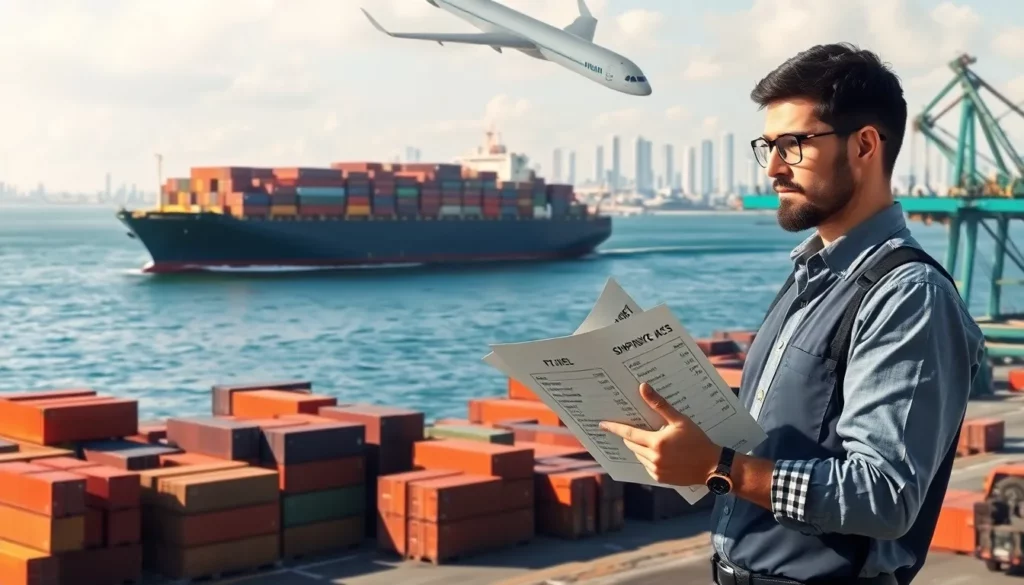
Breaking Down Shipping Costs
Shipping costs go beyond base freight rates. Understanding the full cost structure helps you budget accurately.
Freight Rates Explained
- Sea Freight:
- FCL: $130 for a 20-foot container to Ho Chi Minh City; $150 to Haiphong.
- LCL: $10 per cubic meter from Shenzhen to Ho Chi Minh City.
- Air Freight: $1.10–$3.23 per kilogram from Hong Kong to Hanoi, based on chargeable weight (actual or volumetric).
Tip: Request detailed rate breakdowns to compare carriers.
Customs Duties and Taxes
Vietnam’s import duties depend on the Harmonized System (HS) code. Key points:
- VAT: Standard 10%, reduced to 8% for select goods (Jan–Jun 2025).
- Preferential Tariffs: Available under ASEAN-China Free Trade Agreement (ACFTA) with a valid Certificate of Origin (C/O).
- Exemptions: Some essential goods qualify for 5% or 0% VAT.
Best practice: Verify your product’s HS code early to estimate duties accurately.
Additional Fees to Budget For
| Fee Type | Typical Cost |
|---|---|
| Terminal Handling Charges | Varies by port |
| Documentation Fees | $30–$100 per shipment |
| Fuel Surcharges | Fluctuates with oil prices |
| Peak Season Surcharges | 15–30% during holidays |
| Cargo Insurance | 0.3–0.5% of shipment value |
Important warning: Always insure high-value goods to protect against loss or damage.
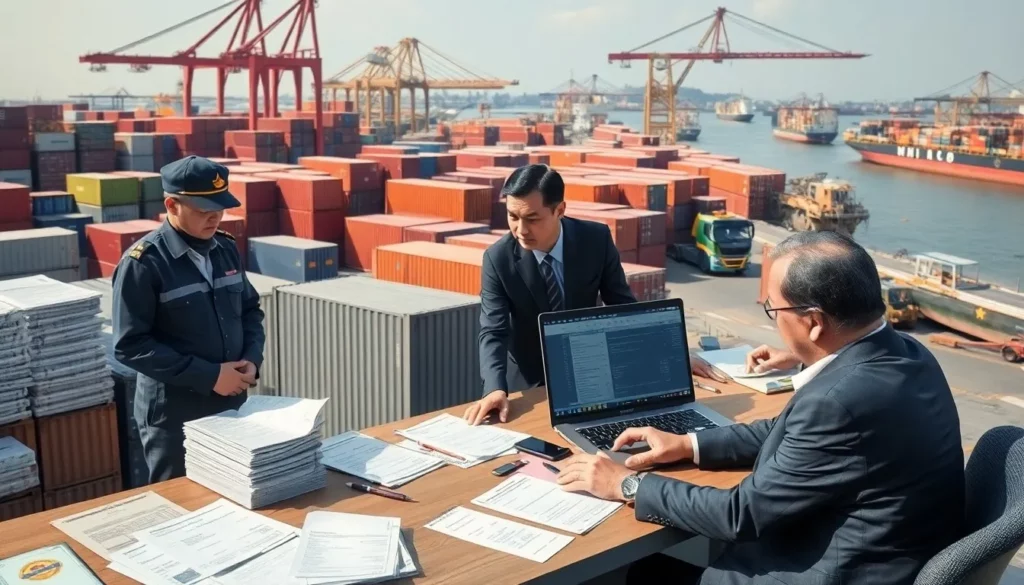
Navigating Vietnam’s Customs Clearance
Customs can be the trickiest part of importing. Proper documentation and preparation are key to avoiding delays.
Vietnam’s Customs Process
Vietnam uses the VNACCS/VCIS system for document submission and verification. The process includes:
- Submitting documents.
- Paying duties and taxes.
- Undergoing inspections (physical or X-ray, based on risk assessment).
- Receiving final release approval.
Tip: Work with a forwarder familiar with VNACCS/VCIS to streamline submissions.
Required Documents
You’ll need:
- Commercial Invoice: Details value, quantity, and description.
- Packing List: Breaks down shipment contents.
- Bill of Lading (B/L) or Air Waybill (AWB): Proof of transport contract.
- Certificate of Origin (C/O): Required for ACFTA tariff benefits.
- Import Licenses/Permits: For regulated goods.
Important warning: In 2025, Vietnam enforces stricter C/O verification for free trade agreement benefits.
Choosing Incoterms
Incoterms clarify buyer-seller responsibilities. Common options:
| Incoterm | Seller Responsibility | Buyer Responsibility |
|---|---|---|
| EXW | Makes goods available at premises | All transport and costs |
| FOB | Delivers to port and loads vessel | International shipping and customs |
| CIF | Covers costs to destination port, insurance | Customs clearance and final delivery |
| DDP | All costs, including Vietnam customs | Receives goods at final destination |
Best practice: New importers should opt for CIF or FOB for balanced control; experienced importers may prefer EXW or DDP.
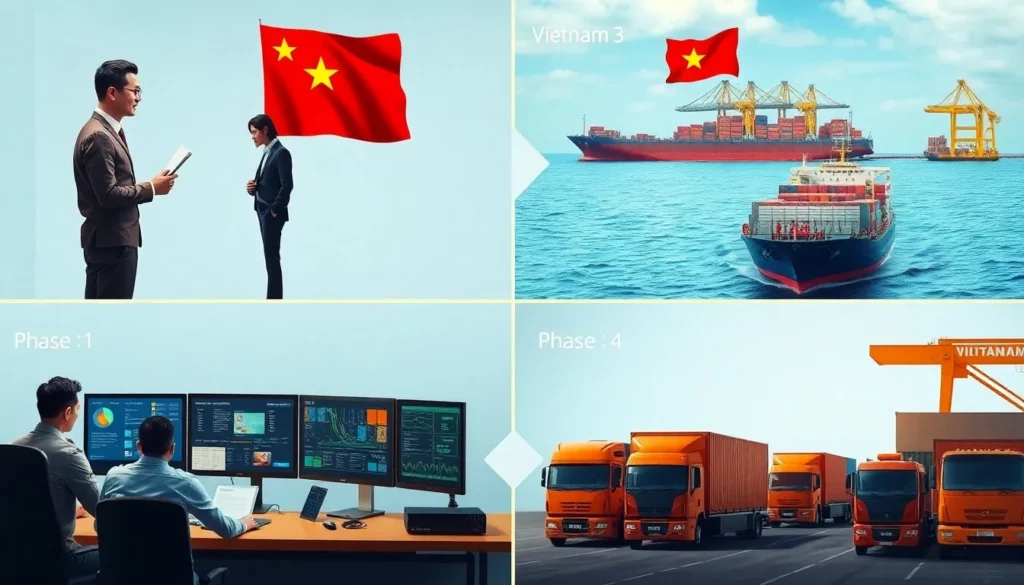
Step-by-Step Importing Process
Follow these phases to ensure a smooth import process from China to Vietnam.
Phase 1: Planning with Your Supplier
- Request quotes from multiple freight forwarders.
- Finalize production and cargo-ready dates with your supplier.
- Agree on Incoterms to clarify responsibilities.
Tip: Clear communication with your supplier prevents costly misunderstandings.
Phase 2: Booking and Shipping
- Choose the best shipping method based on cost, speed, and volume.
- Book freight services early, especially during peak seasons.
- Ensure proper packaging for international transit.
Key takeaway: Early booking secures capacity during high-demand periods.
Phase 3: Transit Monitoring
- Complete China’s export customs clearance.
- Track shipments using forwarder-provided tools.
- Address in-transit issues promptly via your forwarder.
Best practice: Leverage IoT-enabled tracking for real-time updates.
Phase 4: Arrival and Delivery
- Submit documents for Vietnam’s import clearance via VNACCS.
- Arrange final delivery to your warehouse.
- Coordinate with local carriers for timely last-mile transport.
Important warning: Incomplete documents can delay clearance by days.

Selecting a Freight Forwarder
Your freight forwarder is your logistics lifeline. Here’s how to choose wisely.
What Makes a Great Forwarder?
Look for:
- Experience: Proven expertise in China-Vietnam trade.
- Services: Covers air, sea, customs, and warehousing.
- Network: Offices in both countries for local support.
- Specialization: Knowledge of your product’s regulations.
- Communication: Responsive with clear updates.
Tip: Request case studies showcasing their problem-solving skills.
Finding and Vetting Forwarders
- Explore online marketplaces for quotes and reviews.
- Seek referrals from fellow importers or trade associations.
- Attend trade fairs to meet forwarders face-to-face.
- Check online testimonials and B2B ratings.
Due Diligence Steps
- Confirm licenses (e.g., NVOCC).
- Compare all-inclusive quotes.
- Clarify surcharges and fees.
- Evaluate tracking technology.
Key takeaway: A forwarder with strong tech and local expertise can save you significant time and costs.
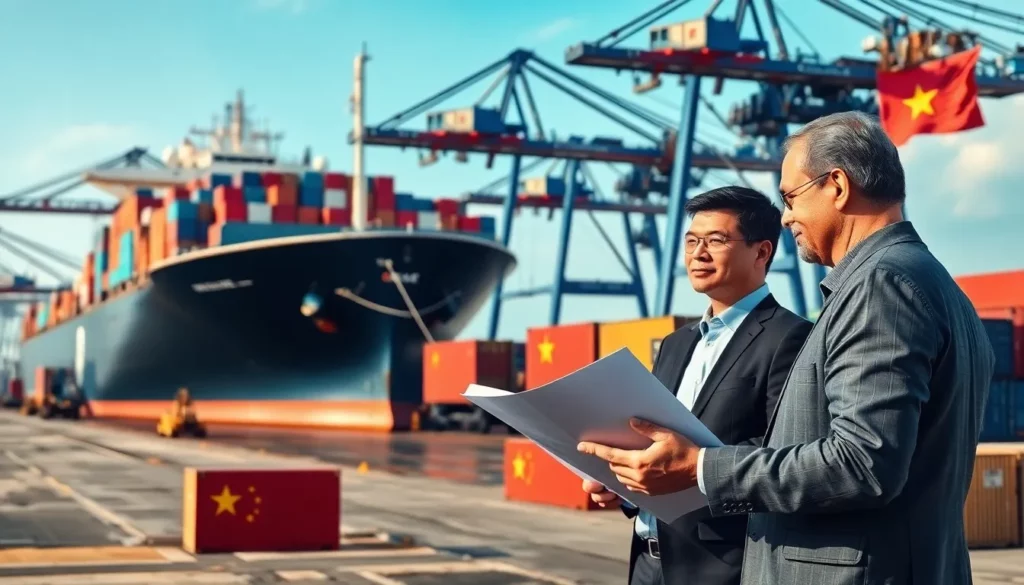
Conclusion
Shipping from China to Vietnam offers cost savings, fast transit, and flexible options to power your business. By understanding shipping methods, costs, and customs, you can make decisions that boost efficiency. Partner with an experienced freight forwarder to handle the complexities while you focus on growing your market share. For personalized advice, consult logistics experts specializing in this trade lane—they’ll tailor a strategy to your unique needs.
Frequently Asked Questions (FAQs)
1. What’s the most cost-effective method for small businesses?
For shipments under 15 cubic meters, LCL sea freight offers the best value at $1.0 per cubic meter from Shenzhen to Ho Chi Minh City. For samples or very small parcels, express couriers provide speed but cost more per item.
Tip: Combine LCL with consolidation services to further reduce costs.
2. How does Chinese New Year affect shipping?
Chinese New Year, factory closures (1–3) weeks) strain capacity, increasing rates by 15–30%. and adding 1–2 weeks to transit times.
Best practice: Book 3–4 weeks in advance to secure space and rates.
3. What’s the difference between FOB and DDP?
FOB shifts responsibility to you once goods are loaded at the port; you handle customs and shipping. DDP means the supplier covers all costs, including Vietnam customs, delivering to your door.
Key takeaway: DDP simplifies but costs more; FOB offers control.
4. Can I consolidate shipments from different suppliers?
Yes, consolidation combines multiple supplier shipments into one container, saving costs and simplifying customs. Your forwarder handles pickups and warehousing, adding 2–3 days but reducing expenses.
Tip: Ideal for businesses with diverse suppliers.
5. What if customs flags my shipment?
A flagged shipment may face physical or X-ray inspection, adding 2–5 days to clearance. Ensure accurate documentation—HS codes, values, and descriptions—to minimize delays.
Important warning: Partner with a forwarder experienced in Vietnam’s procedures to resolve issues quickly.

